Dynamic Capabilities related Implementation Skills for Internet of Things Solutions in the Digital Economy
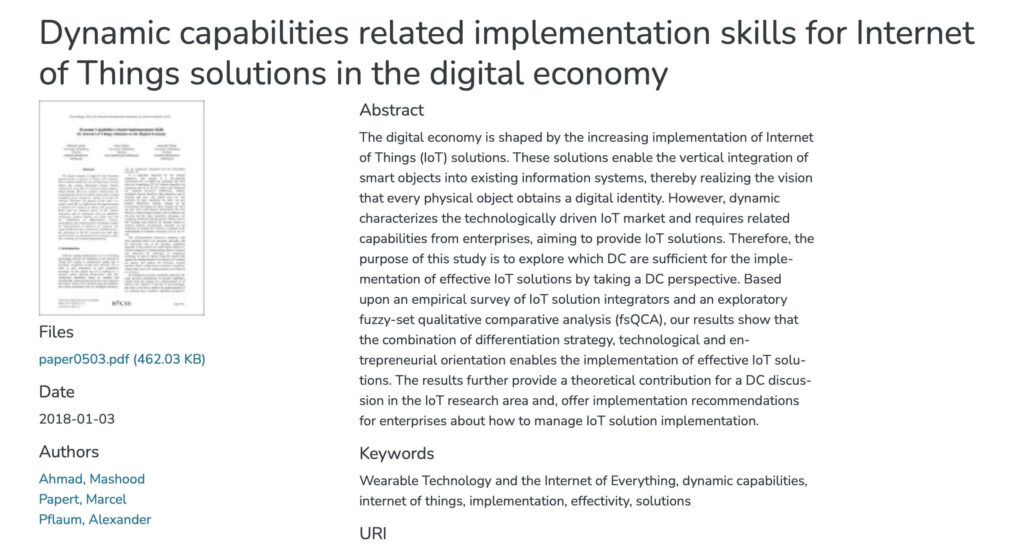
The digital economy is shaped by the increasing implementation of Internet of Things (IoT) solutions. These solutions enable the vertical integration of smart objects into existing information systems, thereby realizing the vision that every physical object obtains a digital identity. However, dynamic characterizes the technologically driven IoT market and requires related capabilities from enterprises, aiming to provide IoT solutions.
Dynamic Capabilities-bezogene Fähigkeiten von Internet of Things-Lösungsintegratoren in Business Ecosystems in der digitalen Welt
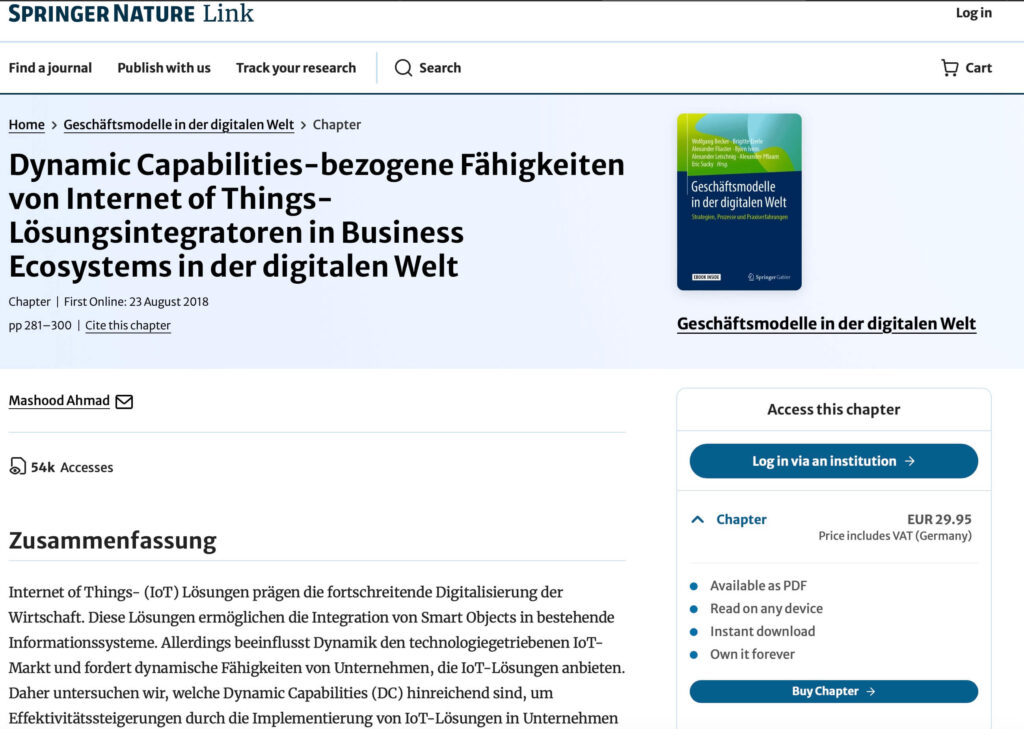
Internet of Things- (IoT) Lösungen prägen die fortschreitende Digitalisierung der Wirtschaft. Diese Lösungen ermöglichen die Integration von Smart Objects in bestehende Informationssysteme. Allerdings beeinflusst Dynamik den technologiegetriebenen IoT-Markt und fordert dynamische Fähigkeiten von Unternehmen, die IoT-Lösungen anbieten.
Daher untersuchen wir, welche Dynamic Capabilities (DC) hinreichend sind, um Effektivitätssteigerungen durch die Implementierung von IoT-Lösungen in Unternehmen zu erreichen.
Behind the Blackbox of Digital Business Models
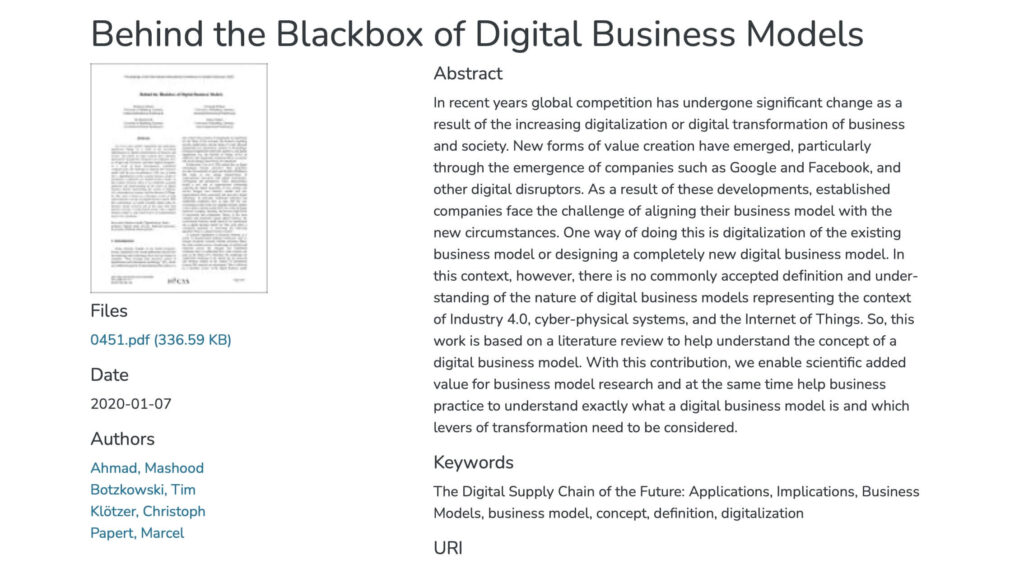
In recent years global competition has undergone significant change as a result of the increasing digitalization or digital transformation of business and society. New forms of value creation have emerged, particularly through the emergence of companies such as Google and Facebook, and other digital disruptors. As a result of these developments, established companies face the challenge of aligning their business model with the new circumstances.
Effective Data Architectures – Challenges and Solutions
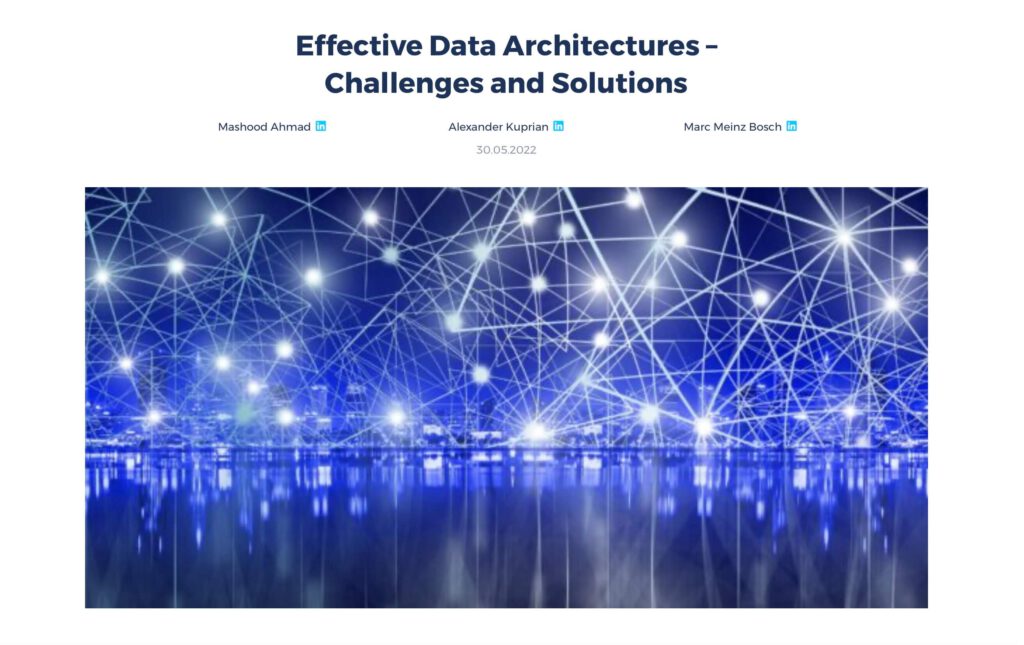
The advance of digitalization, an increasing pressure of competition and disruptions of various kinds act as catalysts for digital transformation in general. More and more, companies are faced with the pressure of implementing changes ever more quickly. In this environment, centralized data architectures become more of a limiting factor, even though it was a logical approach for companies up until a few years ago (and is still, especially with a more traditional business model). Now these centralized data architectures can no longer keep pace with the dynamic and technical requirements of decentralized business domains.
Data Marketplaces – die nächste Evolutionsstufe der digitalen Transformation
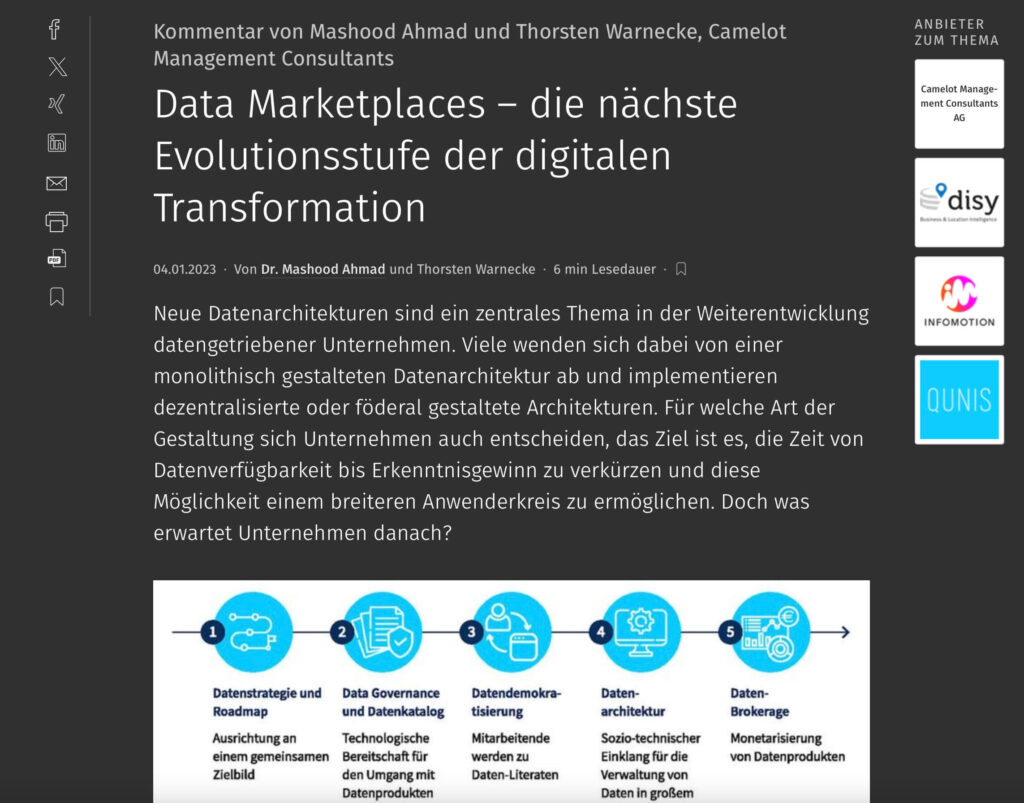
Neue Datenarchitekturen sind ein zentrales Thema in der Weiterentwicklung datengetriebener Unternehmen. Viele wenden sich dabei von einer monolithisch gestalteten Datenarchitektur ab und implementieren dezentralisierte oder föderal gestaltete Architekturen. Für welche Art der Gestaltung sich Unternehmen auch entscheiden, das Ziel ist es, die Zeit von Datenverfügbarkeit bis Erkenntnisgewinn zu verkürzen und diese Möglichkeit einem breiteren Anwenderkreis zu ermöglichen. Doch was erwartet Unternehmen danach?
Datenmanagement mit Data-Mesh-Ansatz – Erfolgsfaktoren für die Umsetzung
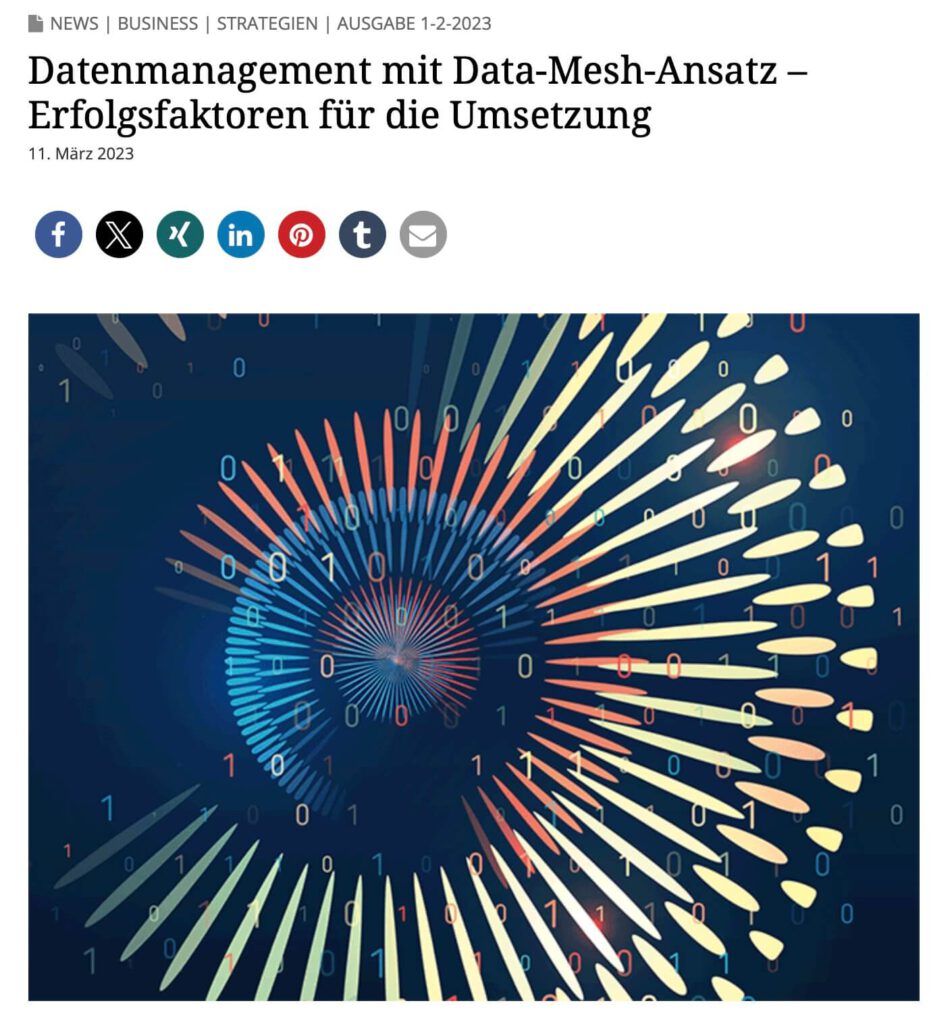
Unternehmen sollten die Umsetzung des Data Mesh als eine Reise verstehen, in der die Balance zwischen Domain-Autonomie und Interoperabilität der Datenprodukte gelingen muss.
Soziotechnischer Ansatz für die Erstellung einer dezentralen Datenarchitektur: Data Mesh
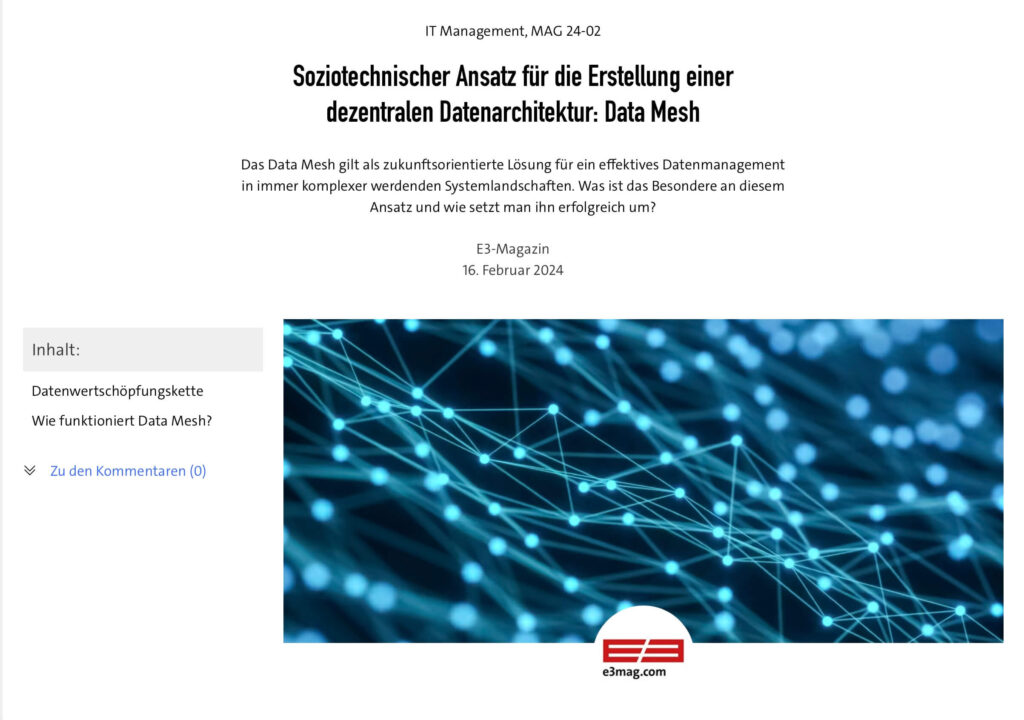
Das Data Mesh gilt als zukunftsorientierte Lösung für ein effektives Datenmanagement in immer komplexer werdenden Systemlandschaften. Was ist das Besondere an diesem Ansatz und wie setzt man ihn erfolgreich um? Dieser Artikel beleuchtet dabei die Datenwertschöpfungskette und ihre Verbindung zum Data Mesh Konzept.
Monetizing Data: A Qualitative Study On Pricing Mechanisms In Data Marketplaces
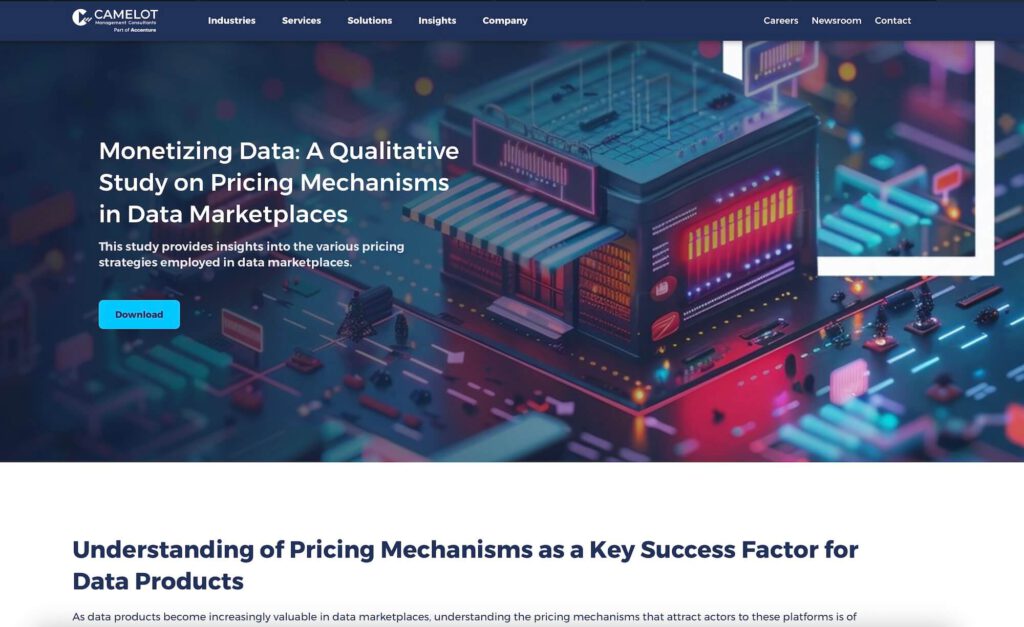
As data products become increasingly valuable in data marketplaces, understanding the pricing mechanisms that attract actors to these platforms is of paramount importance. This study presents a comprehensive literature review focused on pricing mechanisms for data products. The analysis reveals a diverse range of pricing approaches, including single request pricing, auction mechanisms, theoretical and conceptual models, package pricing, subscription-based models, and two-part tariffs. By synthesizing the existing research, this study provides insights into the various pricing strategies employed in data marketplaces. The findings contribute to the understanding of pricing dynamics in data product monetization and offer guidance for data marketplace operators and actors in developing and deploying effective pricing strategies. Further research directions are identified to explore the evolving landscape of pricing mechanisms in data marketplaces.

